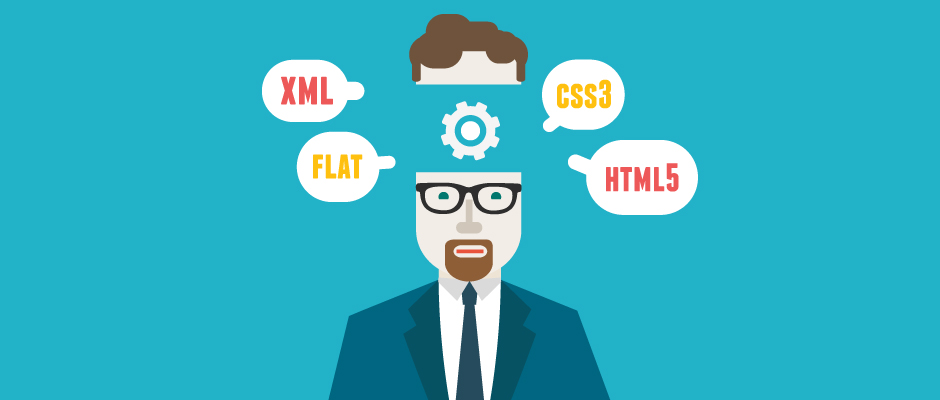Understanding Frontend Build Tools: Webpack vs Rollup vs Vite
Jul 17, 2025 am 01:47 AMWebpack is suitable for large applications, with comprehensive functions but complex configuration; Rollup focuses on packaging libraries, with small output size and strong Tree-shaking; Vite is based on native ES modules, with fast development speed and suitable for modern frameworks. 1. Webpack takes "Everything is a module" as its core, supports code segmentation and rich plug-ins, suitable for complex projects but slow construction; 2. Rollup supports ESM by default, outputs clean code, suitable for NPM library release, but weak processing of non-JS resources; 3. Vite uses browser native ESM, does not package in the development stage, starts quickly, and supports mainstream frameworks, suitable for new projects, but TS and migration support needs to be improved.

In front-end development, building tools are an inescapable link. Many people are a little confused when choosing Webpack, Rollup or Vite - they can all pack code, but the applicable scenarios vary greatly.

Webpack: All-rounders for complex projects
If you are working on a large application with complex structure and many modules, such as an enterprise-level backend system or e-commerce website, Webpack is usually the first choice. Its biggest feature is that "everything is a module", and JS, CSS, pictures and even fonts can be introduced and processed as modules.

- Supports code splitting, can be loaded on demand
- A powerful plug-in ecosystem, almost all functions you can think of have ready-made solutions
- Dev Server (Dev Server) hot update experience
However, its disadvantages are also obvious: complex configuration and slow construction speed. Especially for the first time, the first construction time is easy to exceed tens of seconds, which is not very friendly to rapid iterations.
Therefore, Webpack is more suitable for projects with long-term maintenance and complex functions, and is not suitable for lightweight projects that pursue rapid start.

Rollup: A tool that focuses on packaging libraries
The original intention of Rollup is to solve "how to efficiently package a JavaScript library". It pays more attention to outputting codes with small size and clear structure.
- ES Module packaging is supported by default, and the output is cleaner
- Tree-shaking does a better job of removing useless code
- The plug-in mechanism is also compatible with Webpack, and the ecosystem is gradually improving.
For example, if you write a UI component library or tool function library and want to publish it to NPM for others to use, Rollup is a very suitable choice.
But if you want to do SPA or need to deal with a large number of non-JS resources (such as images, styles, etc.), Rollup seems to be insufficient. At this time, you have to rely on plug-ins to make up for it, which may become troublesome.
Vite: The new favorite of modern front-end development
After Vite came out, many people began to rethink “how to do front-end construction.” It uses the browser's native ES module support, and it is almost not packaged during the development stage, and directly loads the source files, greatly improving the development experience.
- Fast startup speed, you can see the page in seconds
- Supports mainstream frameworks such as TypeScript, JSX, Vue, React, etc.
- Use Rollup when building a production environment, taking into account performance and volume
Vite is best for new projects, especially those using Vue 3 or React. Now Vue's official scaffolding has used Vite by default, which means it has become a mainstream trend.
However, Vite's support for TypeScript configuration and old project migration is not mature enough, and some details need to be manually adjusted.
To summarize:
- Webpack : Suitable for large applications, complete functions but heavy configuration
- Rollup : Focus on packaging libraries, clean output, strong Tree-shaking
- Vite : Fast development, strong modern feel, suitable for new projects and modern frameworks
Basically, these are the differences, which one you choose depends on your project type and needs.
The above is the detailed content of Understanding Frontend Build Tools: Webpack vs Rollup vs Vite. For more information, please follow other related articles on the PHP Chinese website!

Hot AI Tools

Undress AI Tool
Undress images for free

Undresser.AI Undress
AI-powered app for creating realistic nude photos

AI Clothes Remover
Online AI tool for removing clothes from photos.

Clothoff.io
AI clothes remover

Video Face Swap
Swap faces in any video effortlessly with our completely free AI face swap tool!

Hot Article

Hot Tools

Notepad++7.3.1
Easy-to-use and free code editor

SublimeText3 Chinese version
Chinese version, very easy to use

Zend Studio 13.0.1
Powerful PHP integrated development environment

Dreamweaver CS6
Visual web development tools

SublimeText3 Mac version
God-level code editing software (SublimeText3)
 How does React handle focus management and accessibility?
Jul 08, 2025 am 02:34 AM
How does React handle focus management and accessibility?
Jul 08, 2025 am 02:34 AM
React itself does not directly manage focus or accessibility, but provides tools to effectively deal with these issues. 1. Use Refs to programmatically manage focus, such as setting element focus through useRef; 2. Use ARIA attributes to improve accessibility, such as defining the structure and state of tab components; 3. Pay attention to keyboard navigation to ensure that the focus logic in components such as modal boxes is clear; 4. Try to use native HTML elements to reduce the workload and error risk of custom implementation; 5. React assists accessibility by controlling the DOM and adding ARIA attributes, but the correct use still depends on developers.
 Server-Side Rendering with Next.js Explained
Jul 23, 2025 am 01:39 AM
Server-Side Rendering with Next.js Explained
Jul 23, 2025 am 01:39 AM
Server-siderendering(SSR)inNext.jsgeneratesHTMLontheserverforeachrequest,improvingperformanceandSEO.1.SSRisidealfordynamiccontentthatchangesfrequently,suchasuserdashboards.2.ItusesgetServerSidePropstofetchdataperrequestandpassittothecomponent.3.UseSS
 A Deep Dive into WebAssembly (WASM) for Front-End Developers
Jul 27, 2025 am 12:32 AM
A Deep Dive into WebAssembly (WASM) for Front-End Developers
Jul 27, 2025 am 12:32 AM
WebAssembly(WASM)isagame-changerforfront-enddevelopersseekinghigh-performancewebapplications.1.WASMisabinaryinstructionformatthatrunsatnear-nativespeed,enablinglanguageslikeRust,C ,andGotoexecuteinthebrowser.2.ItcomplementsJavaScriptratherthanreplac
 How to manage component state using immutable updates in React?
Jul 10, 2025 pm 12:57 PM
How to manage component state using immutable updates in React?
Jul 10, 2025 pm 12:57 PM
Immutable updates are crucial in React because it ensures that state changes can be detected correctly, triggering component re-rendering and avoiding side effects. Directly modifying state, such as push or assignment, will cause React to be unable to detect changes. The correct way to do this is to create new objects instead of old objects, such as updating an array or object using the expand operator. For nested structures, you need to copy layer by layer and modify only the target part, such as using multiple expansion operators to deal with deep attributes. Common operations include updating array elements with maps, deleting elements with filters, adding elements with slices or expansion. Tool libraries such as Immer can simplify the process, allowing "seemingly" to modify the original state but generate new copies, but increase project complexity. Key tips include each
 Security Headers for Frontend Applications
Jul 18, 2025 am 03:30 AM
Security Headers for Frontend Applications
Jul 18, 2025 am 03:30 AM
Front-end applications should set security headers to improve security, including: 1. Configure basic security headers such as CSP to prevent XSS, X-Content-Type-Options to prevent MIME guessing, X-Frame-Options to prevent click hijacking, X-XSS-Protection to disable old filters, HSTS to force HTTPS; 2. CSP settings should avoid using unsafe-inline and unsafe-eval, use nonce or hash and enable reporting mode testing; 3. HTTPS-related headers include HSTS automatic upgrade request and Referrer-Policy to control Referer; 4. Other recommended headers such as Permis
 What are custom data attributes (data-*)?
Jul 10, 2025 pm 01:27 PM
What are custom data attributes (data-*)?
Jul 10, 2025 pm 01:27 PM
The data-* attribute is used in HTML to store additional data, and its advantages include that the data is closely related to elements and comply with HTML5 standards. 1. When using it, name it starts with data-, such as data-product-id; 2. It can be accessed through JavaScript's getAttribute or dataset; 3. Best practices include avoiding sensitive information, reasonable naming, paying attention to performance and not replacing state management.
 Applying CSS Styles to Scalable Vector Graphics (SVG)
Jul 10, 2025 am 11:47 AM
Applying CSS Styles to Scalable Vector Graphics (SVG)
Jul 10, 2025 am 11:47 AM
To style SVGs using CSS, you first need to embed SVGs inline into HTML for fine control. 1. Inline SVG allows its internal elements such as or to be directly selected through CSS and to apply styles, while external SVG only supports global styles such as width and height or filters. 2. Use regular CSS syntax such as .class:hover to achieve interactive effects, but use fill instead of color to control the color, and use stroke and stroke-width to control the outline. 3. Use class names to organize styles to avoid duplication and pay attention to naming conflicts and scope management. 4. The SVG style may be inherited from the page, and can be reset through svg*{fill:none;stroke:none;} to avoid
 How to add a favicon to a website?
Jul 09, 2025 am 02:21 AM
How to add a favicon to a website?
Jul 09, 2025 am 02:21 AM
Adding website Favicon requires preparing icon files, placing the correct path and quoting them. 1. Prepare multi-size .ico or .png icons, which can be generated by online tools; 2. Put favicon.ico in the website root directory; 3. If you need to customize the path or support more devices, you need to add a link tag reference in the HTMLhead; 4. Clear the cache or use the tool to check whether it is effective.






